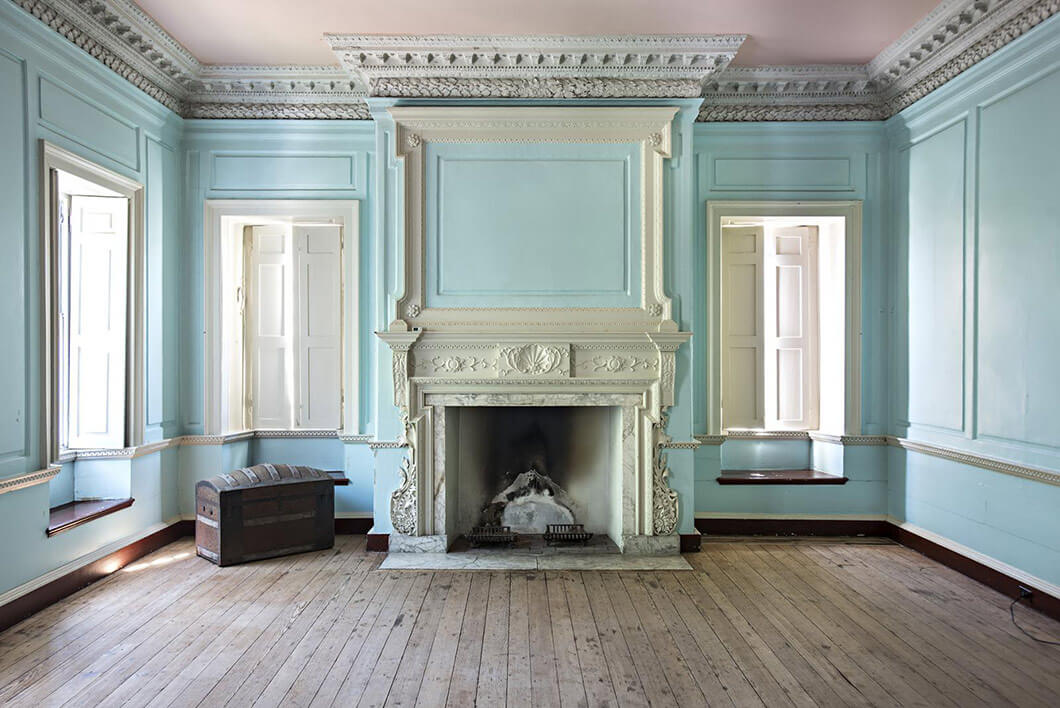- March 29, 2021
- By Maggie Haslam
Willie Graham ’80 credits his success as an architectural historian to knowing his way around an 18th century pit saw. It was at Colonial Williamsburg, Graham’s first job out of college, where he and other research staff were encouraged to shadow the tradespeople on site and learn the age-old tools used to create early America’s most treasured places.
“Knowing how to recognize the technology used to produce what I see in the field has been greatly enhanced by those guys letting me make a nail or throw the mud for a brick.”
Graham is considered a leading authority in restoration, reconstruction and building analysis. As a consultant on some of the nation’s most important public and private historic sites, as well as projects across the Caribbean and Great Britain, he has been integral to the evolution of professional standards in preservation fields, from building analysis to restoration craft. His writings, sketch work and prolific photography, meanwhile, have provided a blueprint for colonial building practice that might otherwise not exist.
Graham recently discussed the sweep of his influential career, the project in Annapolis now that might just be his opus, and the tool he never leaves home without.
You took a fellowship with Colonial Williamsburg nearly right out of college and ended up staying for nearly four decades. Why?
I was hired to record agricultural buildings and outbuildings for this 18th-century house there. Around that time, Colonial Williamsburg was reconstructing a blacksmith shop and a mental hospital. I asked to review the drawings of the blacksmith shop; it wasn’t in my purview, I just wanted to see what they were doing. And I began to question some of the decisions they were making, and I quickly got moved onto the design review committee. Then I helped out on the mental hospital, and they finally gave me the position of the curator of architecture. From that point on, I worked on every restoration or reconstruction in town for 37 years.
When you approach a project, how do you do it in a way that honors the original construction? It’s not like there’s a manual from the 18th century on how to lay brick.
There are very few of us that have been fortunate enough to be in a position where someone would pay us for an entire career to go out there and look at this kind of stuff. We’ve just been able to see more historic buildings related to these restorations and reconstructions than anyone else on the planet; to be able to understand the small pieces that add up to a bigger whole and having this mental reference of, say, having seen three dozen kitchens done this way. And then you layer on top of that what we were able to do at Colonial Williamsburg, which was to literally recreate these period trades—the carpenters, joiners and blacksmiths, plasterers and brick makers.
What are you working on now?
 At the moment I’m working on three major restorations, but the Brice House in Annapolis is the perfect alignment of all that I’ve studied and learned. It’s a big 18th-century house that the state of Maryland purchased in 2014. It’s a $22 million multiyear restoration.
At the moment I’m working on three major restorations, but the Brice House in Annapolis is the perfect alignment of all that I’ve studied and learned. It’s a big 18th-century house that the state of Maryland purchased in 2014. It’s a $22 million multiyear restoration.
We want to make this the restoration of our generation. We want to learn from organizations like Colonial Williamsburg, Mount Vernon and Montpelier—what they’ve done well and right and avoid mistakes they’ve made. I conducted an initial study of the building, how it’s changed over time, a materials analysis, what period it should be restored to, and then we started looking for an architect. It turned out that Bill Neudorfer (’85), a classmate of mine from Maryland and a truly talented architect, happened to be just the right guy for the job. He’s done some really extraordinary, high-end work and that’s what this is—we’re making all the nails, all the hardware, we’re handmaking the paints...
Buildings have long lives. How do you determine what period you’re going to restore something to in the 21st century?
Ultimately, I try and consider what is best for the building long-term and what of importance will be lost if you decide to restore it to a particular period that cuts something else out. To me, the bottom line is, when you pick a period to restore it to, you’ve got to bring everything to that period. You can’t keep the later stuff because you like it.
What’s a tool you never leave the house without?
A pocket full of pencils! Also, years ago I started making these notebooks of interleafed graph and white paper; I always have one when I go to a site. I’ve got one for every state or country I’ve worked in and I keep sketches notes on every building that I study.
Topics
People